
Anthos + Apigee: 4 Lessons Learned
As a first-wave partner for both Google’s Anthos and Apigee Hybrid, SoftServe had the unique opportunity to connect the dots and test integration between the two platforms. In this blog, you’ll learn about Apigee Hybrid and Apigee and Anthos benefits, followed by four critical lessons learnt from our testing.

Both Apigee and Anthos are commonly deployed within hybrid environments by organizations that rely on legacy platforms for mission-critical business applications. These companies recognize the importance of modernizing their systems and moving away from on-prem monoliths, but the journey is often complex.
SoftServe collaborated with Xiaowen Xin, Product Manager at Google, and Sudheer Gopalam, Head of Customer Success (AMER-West) and Global Hybrid GTM Lead at Apigee, to identify key issues. The findings were reviewed and validated by both Anthos and Apigee product teams. Below, we share our notes from the field to provide a complete view of the lessons learned.

APIGEE HYBRID BENEFITS
Apigee Hybrid is an API management deployment option for Apigee. It offers flexibility in where the runtime can be hosted — on-premises, in a data center, or in any public cloud. The control plane runs as a service on Google Cloud, allowing customers to manage their environments efficiently.
Apigee Hybrid combines the market-leading API management capabilities of Apigee with the freedom to deploy and operate the runtime wherever needed. This architecture delivers clear advantages for integration, security, and operational flexibility, helping organizations simplify troubleshooting and achieve better control over their hybrid environments.
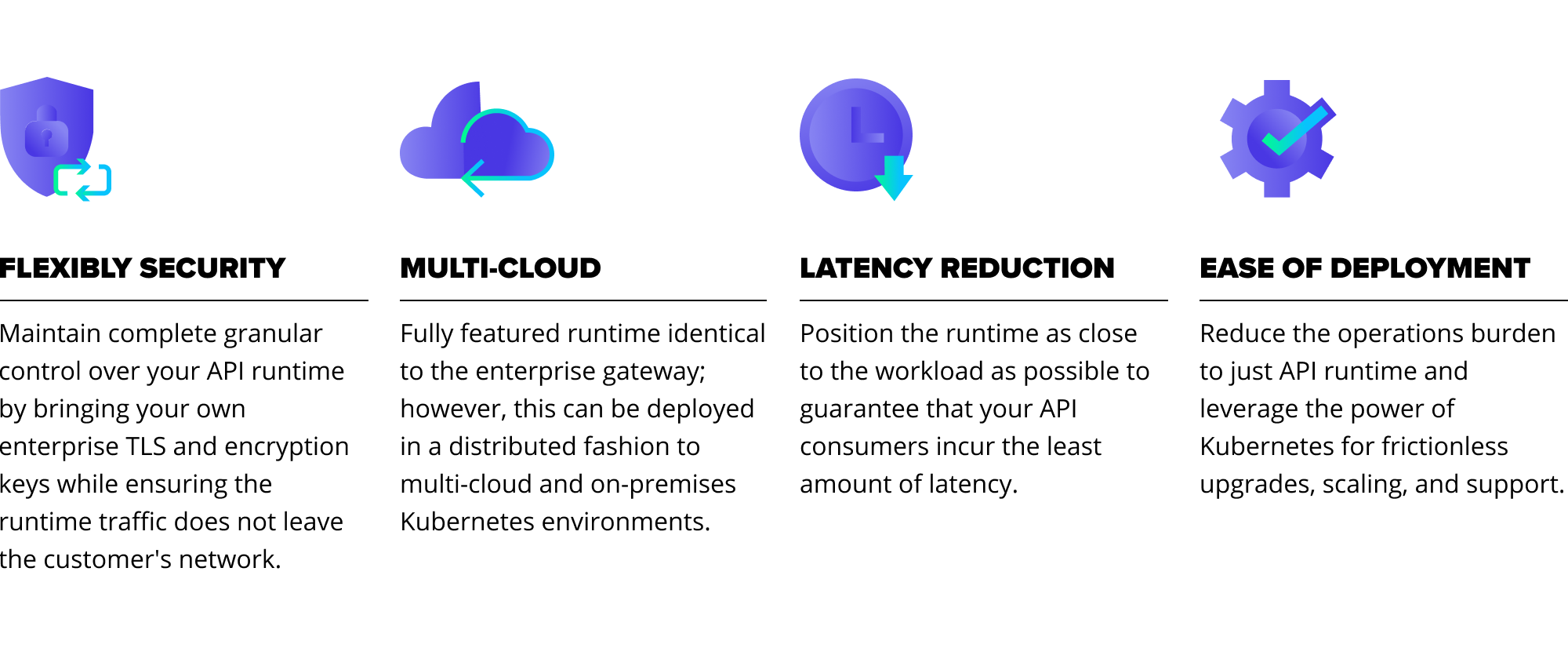
ANTHOS + APIGEE BENEFITS
The integration roadmap between Anthos and Apigee is already strong. Google has positioned Apigee as a key component within a complete Anthos deployment. Together, Anthos and Apigee form a powerful foundation for application modernization and multi-cloud strategies built on Kubernetes containerization.
Apigee Hybrid is designed to work seamlessly with Anthos and GKE/GKE On-prem. The use of Anthos enables several benefits for Apigee Hybrid deployments:

Having a fully supported stack, from the OS level up, ensures consistent and efficient support regardless of where an issue arises. Logs are automatically sent to Google Cloud (Cloud Operations). When assistance is needed, users can open a support ticket and grant permission for direct log review, saving valuable time and effort.

Google’s deep expertise in Kubernetes, having developed and released it as open source, means GKE is optimized to reduce operational overhead. But GKE is not the only component Anthos offers. Apigee Hybrid also benefits from Anthos Service Mesh (ASM), which provides robust routing and security mechanisms. These features operate behind the scenes, giving users the advantages of ASM without requiring in-depth knowledge of it.

Upgrading software is often one of the most complex operational tasks. A key goal of Anthos and GKE On-prem is to make the upgrade process as seamless as possible. By leveraging the Anthos stack, Apigee Hybrid undergoes extensive testing to ensure smooth updates, enhanced security, and long-term reliability.
The decision to support Anthos as the operating platform was made with careful consideration. While many customers have their own Kubernetes solutions, Anthos adds value by simplifying deployment, management, and modernization efforts. In this sense, Anthos can be viewed as part of the package that enables successful Apigee Hybrid operation and integration.
FOUR CRITICAL APIGEE AND ANTHOS LESSONS LEARNED
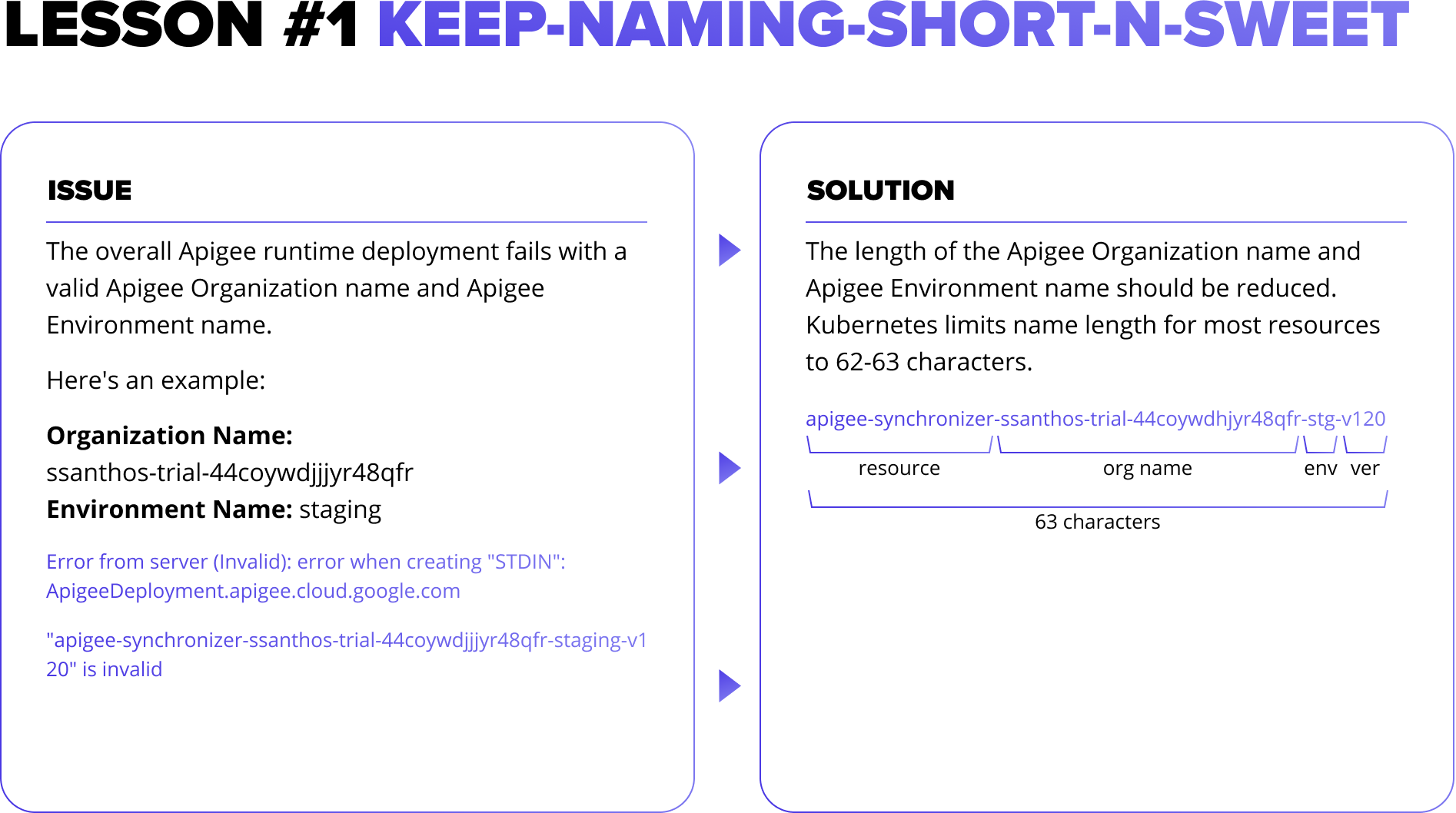
There is currently a 63-character limit, which may cause naming restrictions. When designing your naming convention, consider limitations imposed by Kubernetes and Apigee to avoid deployment issues.
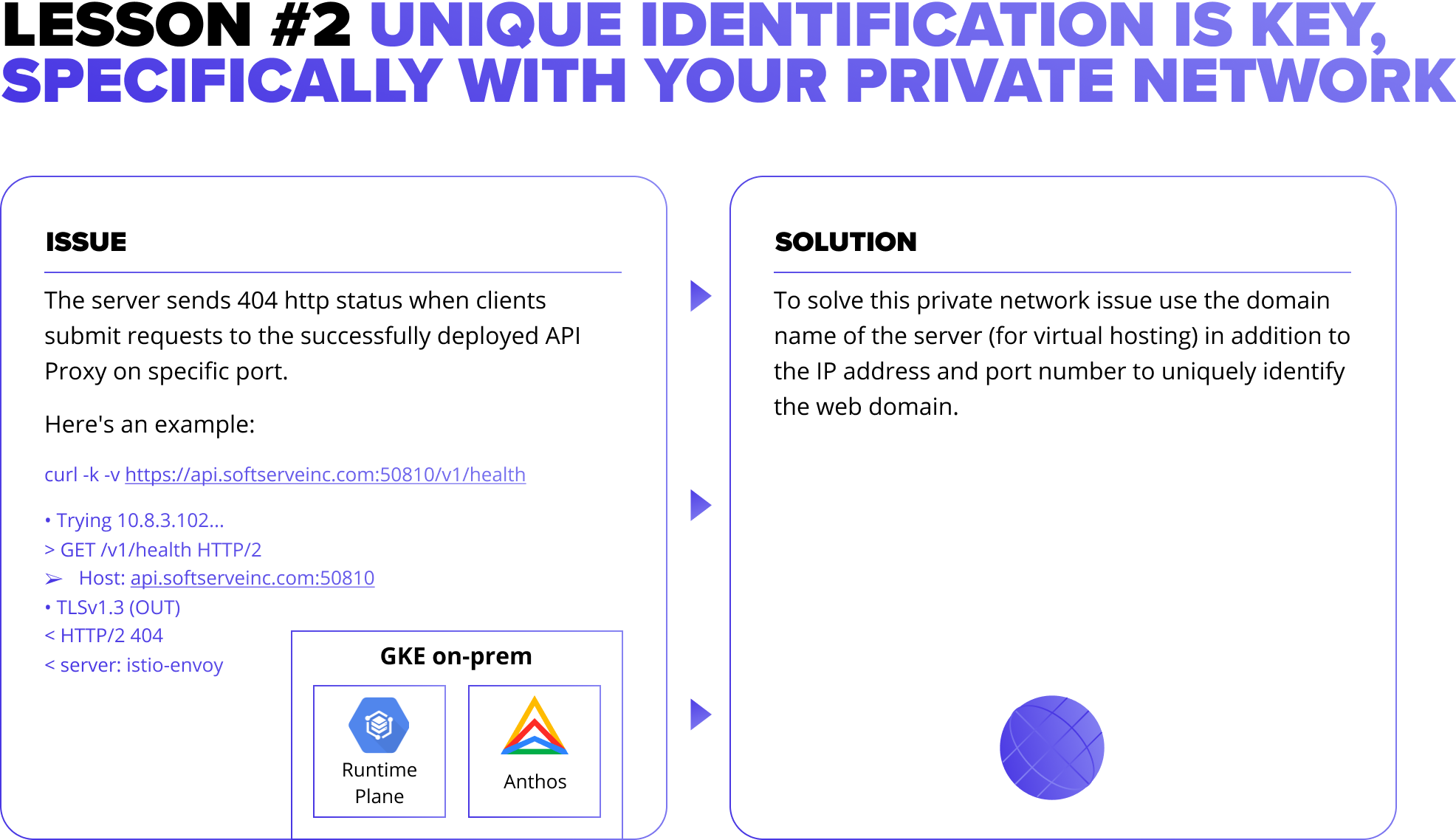
When a service of type NodePort is used for GKE On-prem (Anthos) within a private network, an existing Istio issue can interrupt the routing of external traffic to internal services. To resolve this, use the domain name of the server (for virtual hosting) in addition to the IP address and port number to uniquely identify the web domain.
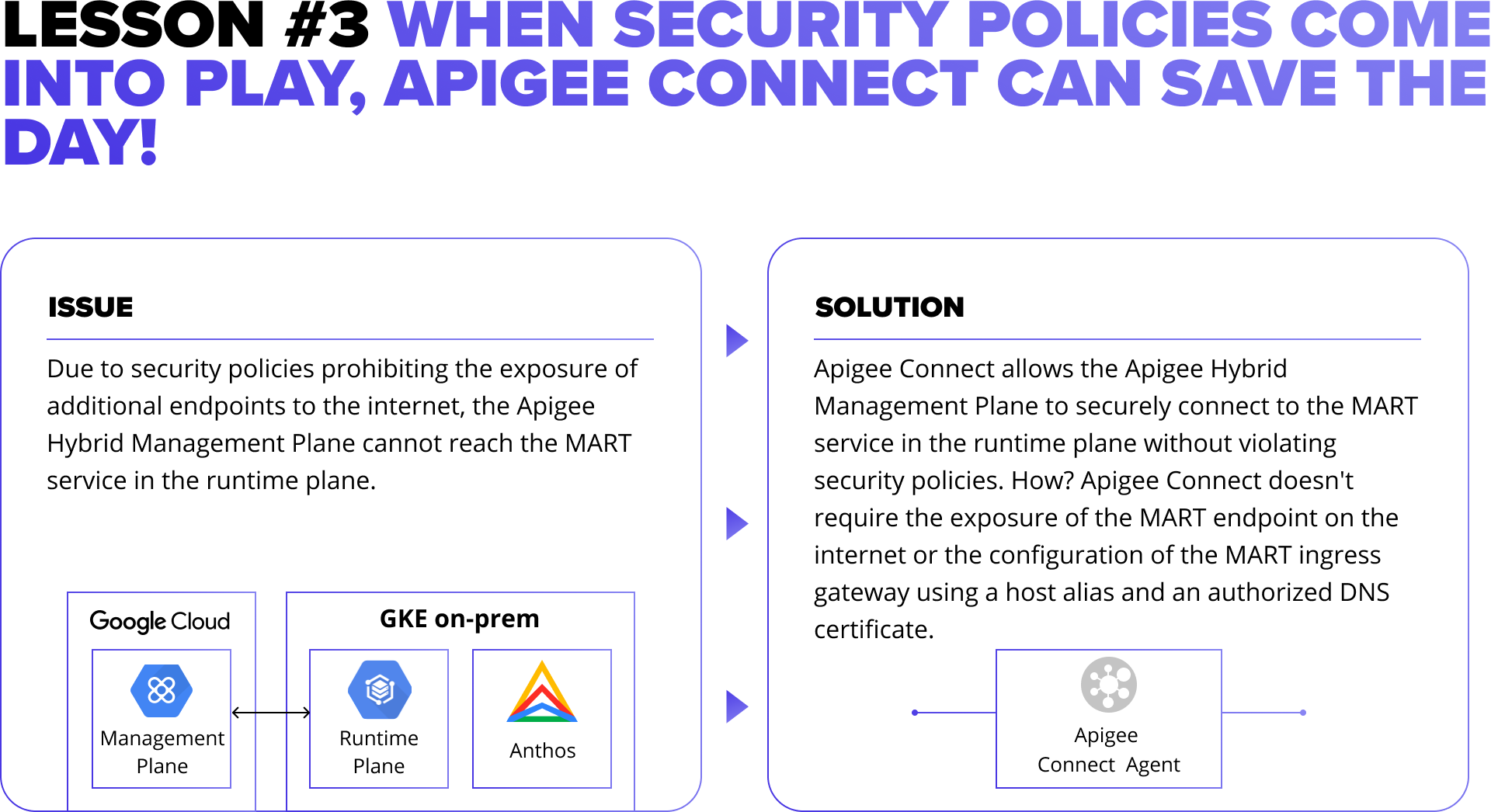
Apigee MART requires exposing a dedicated endpoint to the internet for requests coming from outside the cluster. For security reasons, some organizations cannot expose additional endpoints. In this case, we recommend using Apigee Connect, which replaces direct MART integration and removes one of the required ingresses. This approach also strengthens security and simplifies hybrid troubleshooting.
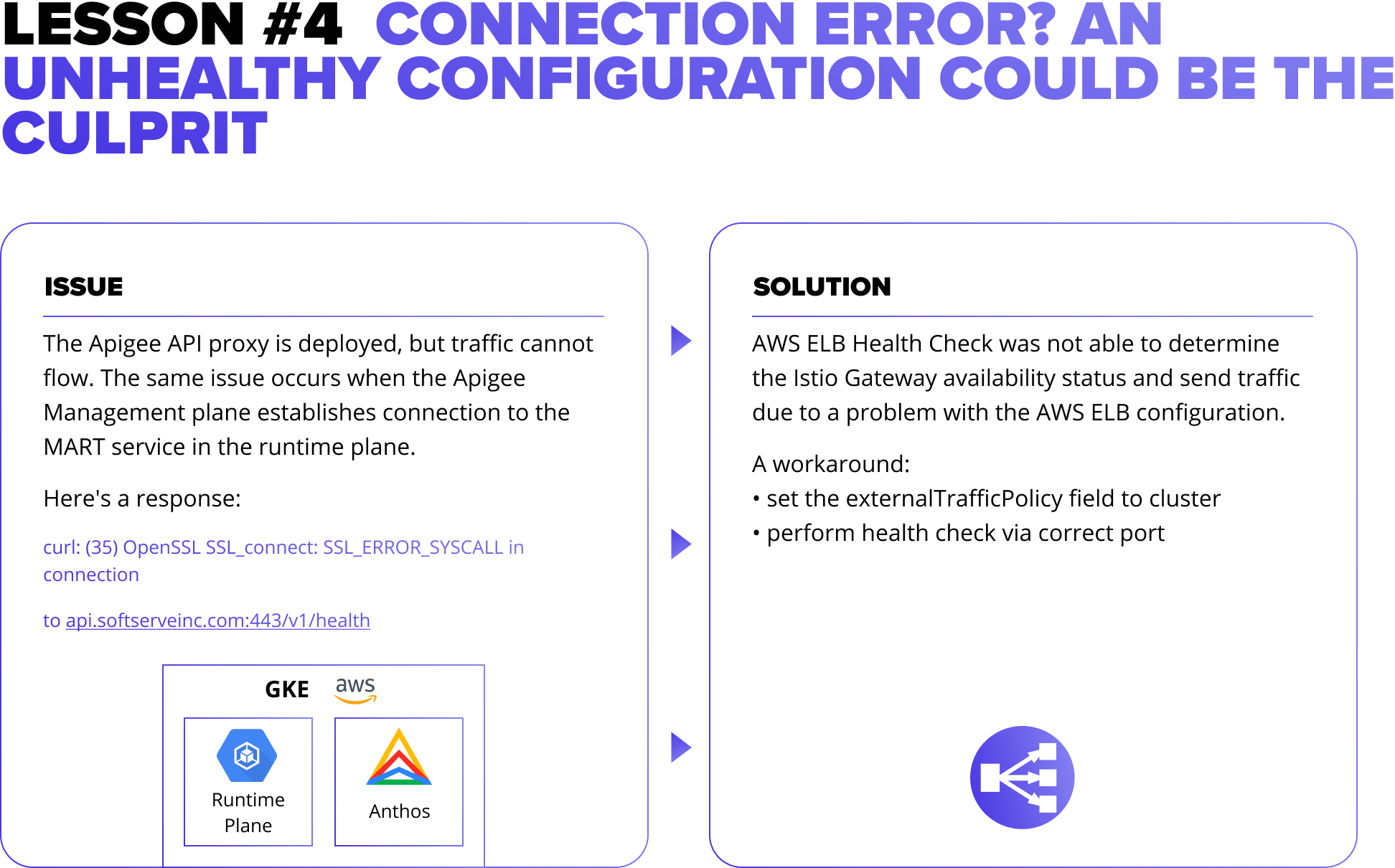
ONE LAST THING
We hope our lessons learned were valuable to you. Stay tuned as we’ll continue to share our learnings as we progress. In the meantime, let’s talk about your experiences or discuss where you are in your cloud, API, and containerization journey.
Start a conversation with us
